
Finding faith in fluidity.
CLIENT
Gumtree
LOCATION
London
TIMELINE
6 weeks
YEAR
2022
WORKED WITH

Bea Gatchalian
Art Director

Siyuan Li
Packaging Designer

Dora Alvarez
Copywriter/Videographer

Simon Coxon
Advisor

Jennifer Cearns
Advisor
Summary
Cumtree is a postgraduate project that explores notions of trust in the context of a fringe marketplace. Through interface and packaging design, credibility-building interactions between buyers and sellers are constructed.
Current Scenario
Tapping into kinks and fetishes is a valid form of release and escape from reality, and can be helpful.
Due to social stigma, however, people with bodily fluid fetishes currently utilise largely unmoderated, disparate platforms such as Twitter, Reddit and the Dark Web, leaving room for issues to arise.
Aims
Primary Aim: To design a system where people can buy and sell body fluids, so people with fetishes will be able to safely and easily connect with others.
Secondary Aims: To build a community and safe space for people to tap into their fetishes, and provide an avenue for people wanting to get into kink to access body fluids that may enable them to do so.
Outcome
We created a speculative section on Gumtree (the UK’s #1 classified ads platform), called Cumtree, for the buying and selling of human bodily fluids. Along with this, we also created packaging for the storage and transport of the fluids, with built-in features to increase trust. Cumtree would be marketed in fetish clubs and sex shops, using designed print collaterals and merchandise.
My role
-
Lead the discovery phase of the project, designing and executing several research methods such as usability reviews, business origami, user flow journeys, probes and field research
-
Executed discovery workshop to test prototypes with users
-
Created wireframes and designed the UI for the mobile application
-
Developed the overall visual identity, print collaterals and merchandise
Early ideation
We initially focused on two areas: 1) staging how we could destigmatize fetishes, and 2) designing meeting places that could create trust.

However, our approaches were rather technocratic and eschewed the social aspect of trust. We decided to narrow in on signifiers of trust between people, focusing on Gumtree itself.
Research Methodology
We used five different research methods: probes, usability reviews, business origami, user flow journeys, and field research, to decide on features that could create trust in the mobile interface and packaging. After this, we tested our prototypes in a hot-seating workshop.
Probes
A number of probes were set up around the university. Combined with secondary research, they confirmed a negative stigma around bodily fluid fetishes and a need for a separate space.



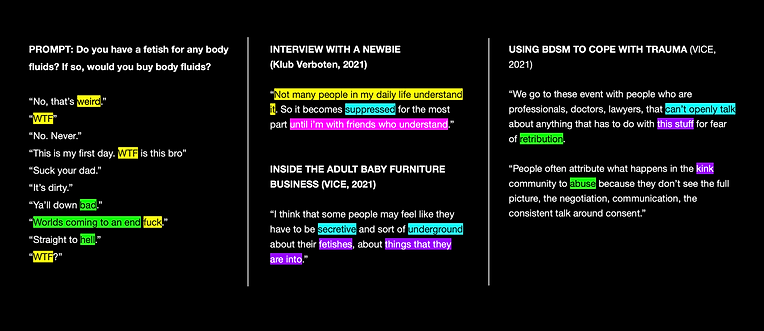
Usability review
An analysis of the current Gumtree marketplace was conducted. Two main problems, and potential solutions, were identified:

1. Insufficient information about sellers
The only information known about sellers is how long they have been posting for. As a measure to increase trust, reviews by buyers could be implemented and shown.

2. Insufficient information about the item
There is also not enough information about the item, for example, how this cupboard would be transported. Therefore, we could require more details from the seller, such as storage and delivery methods.
Business Origami
To place the above recommendations and understand where we could intervene in the user journey, we conducted a business origami to establish a shared understanding and vocabulary of the overall process. From this, we could create a user life cycle and user journey, where we could identify points where trust is important.
User life cycle and journey

Field research
We visited eight different sex shops in central London: Harmony, Prowler RED, MOOD Sex Shop, Soho Original Adult Store, Clonezone, Ann Summers, British Adult Store and Regulation.
Combining our interviews with the store owners and assistants, observations of the adult stores, and desktop research, we used the method of thematic coding to draw four key findings:

-
Like-mindedness could help build trust.
-
Anonymity and identification could both build trust or distrust in sex/fetish-related communities.
-
Rubber and materials with similar qualities, humanizes and sensualizes.
-
There is pleasure in smell (and taste).




At this point, we decided to focus on two distinct parts of the system: the mobile interface, as well as packaging, as it was clear that both could inspire trust in different ways.
After creating some low-fidelity prototypes, we designed a workshop to test them with users in different scenarios before developing high-fidelity screens and packaging.
Workshop; Hot-seating and testing
Four participants took part in a role-playing workshop where we played out three scenarios:
1) The seller uses a different packaging as opposed to Gumtree packaging
2) Packaging seal is broken
3) Seller is late and decided to cancel

Scripts for buyer and seller in Scenario 1

Scripts for buyer and seller in Scenario 2

Scripts for buyer in Scenario 3


Role-playing in progress

Getting feedback on screens
Overall, we drew five key insights from the workshop.
-
People don't want any record of their disesteemed activities and transactions, even if it helps with security.
-
A certain amount of identifiable information could build trust.
-
A signifier helps build trust but also endangers anonymity.
-
A high foot-traffic meeting place does not necessarily build trust.
-
A punishment system for questionable behavior and dishonoring agreements is needed.






💡 During the post-workshop interview, participants implied that the exposure to the real and physical environment triggered real feelings and behaviour.
💡 Nuances and micro-interactions were observed despite having a nature of being artificial. The amount of detail that the team was able to record and analyse shows the potential of a situated and embodied research tool to create value in designing for complex contexts like trust.
Mobile interface: Development
The first iteration of the mobile application was called GumtreeSap, inspired by dating applications and aiming to match buyers and sellers of human bodily fluids based on their preferences. However, this idea was scrapped as it didn't allow for the quick perusal of different items. I also created a high-fidelity screen.


The second iteration focused more on the interactions within the application, aiming to maximize trust at every given opportunity. Moreover, it followed the aesthetic of the current Gumtree application. We tested this iteration in the role-playing workshop.


Verification of users
Search for bodily fluids


Arrangement of meeting
Reviews
From the workshop, we received feedback that interactions were over-designed, and that the section could take on a more subversive visual identity overall. I then created wireframes and a new UI.

Wireframe sketches

Screens (Figma)






Packaging
We also focused on designing the packaging for the bodily fluids as a means to build trust.

First, we experimented with squeezable packaging for urine (mimicking piss play) and packaging that could be cut into for blood (mimicking blood play), emulating the actions people with bodily fluids could potentially take with them.
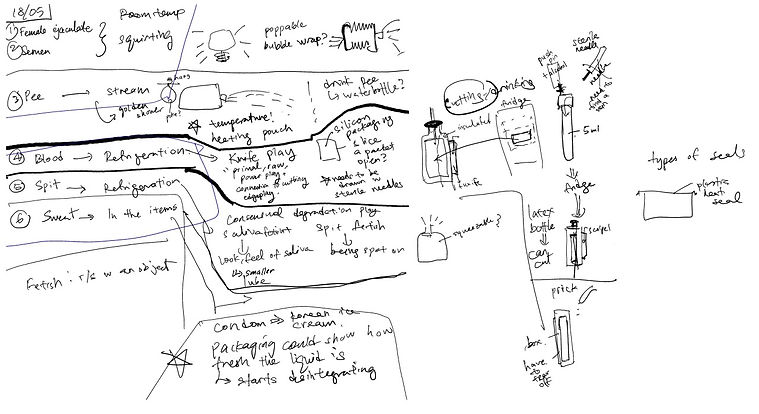
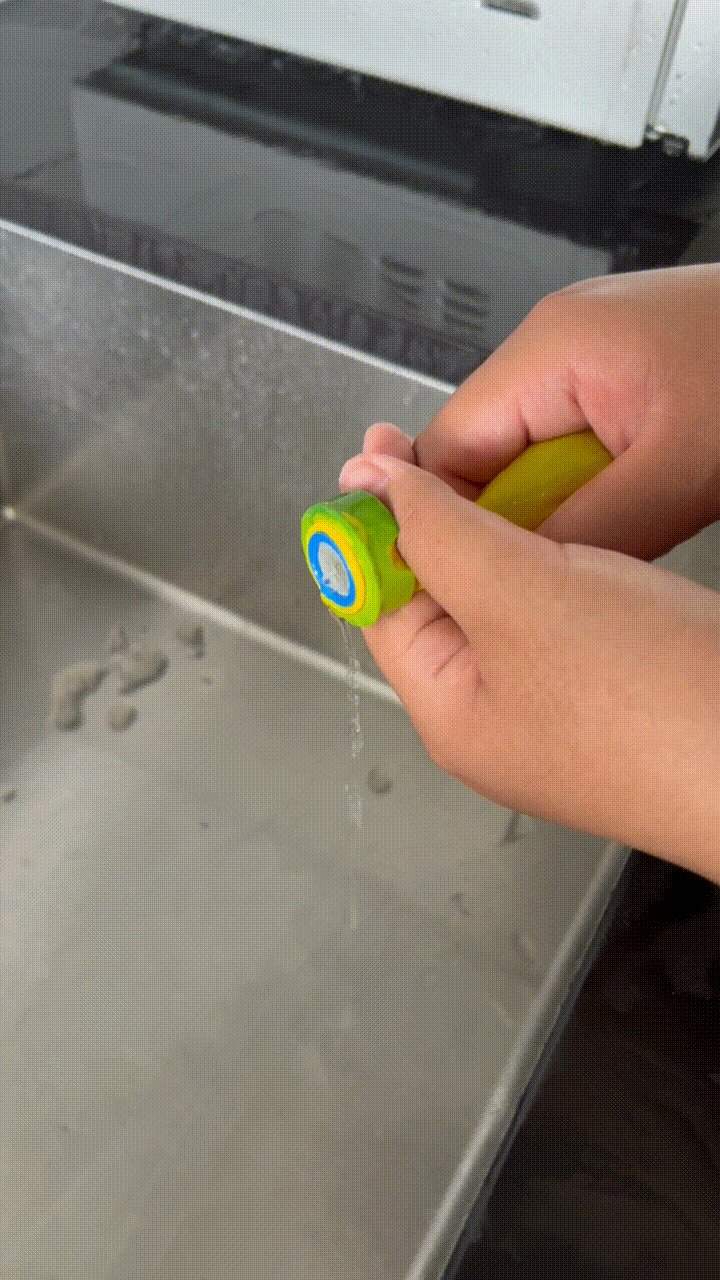


However, as blood was very niche, we decided to focus on the more common fetishes of urine, semen, female ejaculate, and sweat. We then experimented with inner packaging that could retract and expand to push fluid out in a stream, and an outer packaging with a reprogrammable QR code.



Our workshop participants commented that they were too striking, suggesting that they would become very easily recognizable. We then designed packaging with a more subtle Cumtree logo print, with the reprogrammable QR code hidden in the pattern. Referring back to our research on rubber and silicon as a materials, we also secured inner packaging made from silicon.
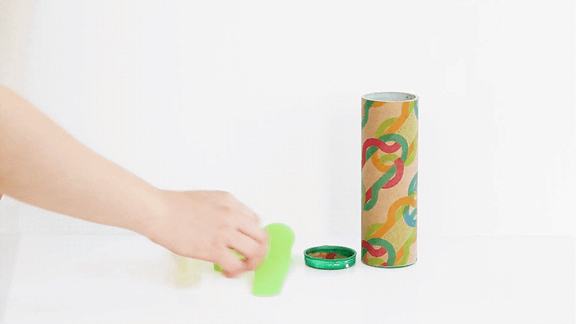
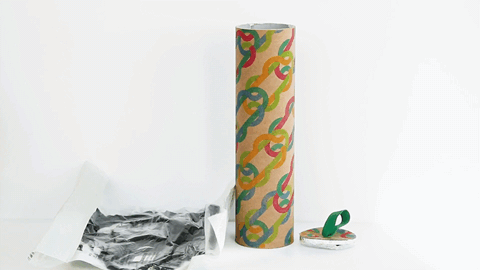
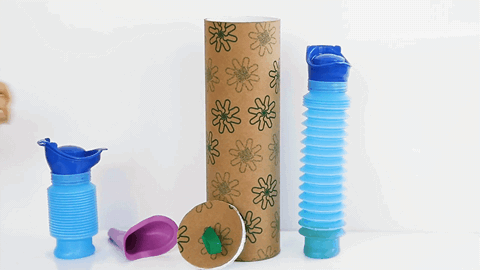

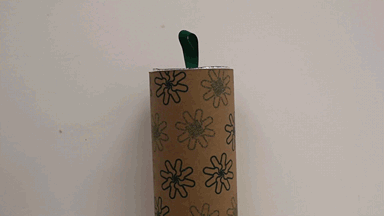
Collaterals
From the workshop, we received feedback that using just date of birth to get into the section might not necessarily protect children, who could easily lie. Exclusivity could then be achieved by having passwords be given to people with influence in the community, who could give that out.
I created posters and flyers to be handed out at sex shops and fetish clubs that would also contain the password to enter the Cumtree section. Shirts, similarly, would be worn by members of staff at fetish clubs that could advertise Cumtree.




Summary

Accolades
“It’s contextual design, not speculative design, not over-designed, not too commercial.”
— Simon Coxon, Head of UX, Design and Research at Gumtree.com
“You could take bodily fluids out, and you’ll have a project nicely designed around trust… could be children’s clothes, and it would still work.”
— Simon Roberts, Creative Director for BBC iPlayer
Reflection
The biggest challenge for this project was finding users with fetishes. We tried many ways to contact them, emailing thirteen universities with kink/fetish societies, of which two passed our details on to their members (we still didn’t manage to reach anyone). To approximate as close as we could to them, we thematic-coded our secondary sources, performed role-playing, and triangulated our research to achieve our goal. It was a valuable experience to be able to gain information indirectly through a variety of different research methods.
I would also like to thank my amazing group. We chose a bold topic, but we communicated closely, adapted and produced work we can be proud of.